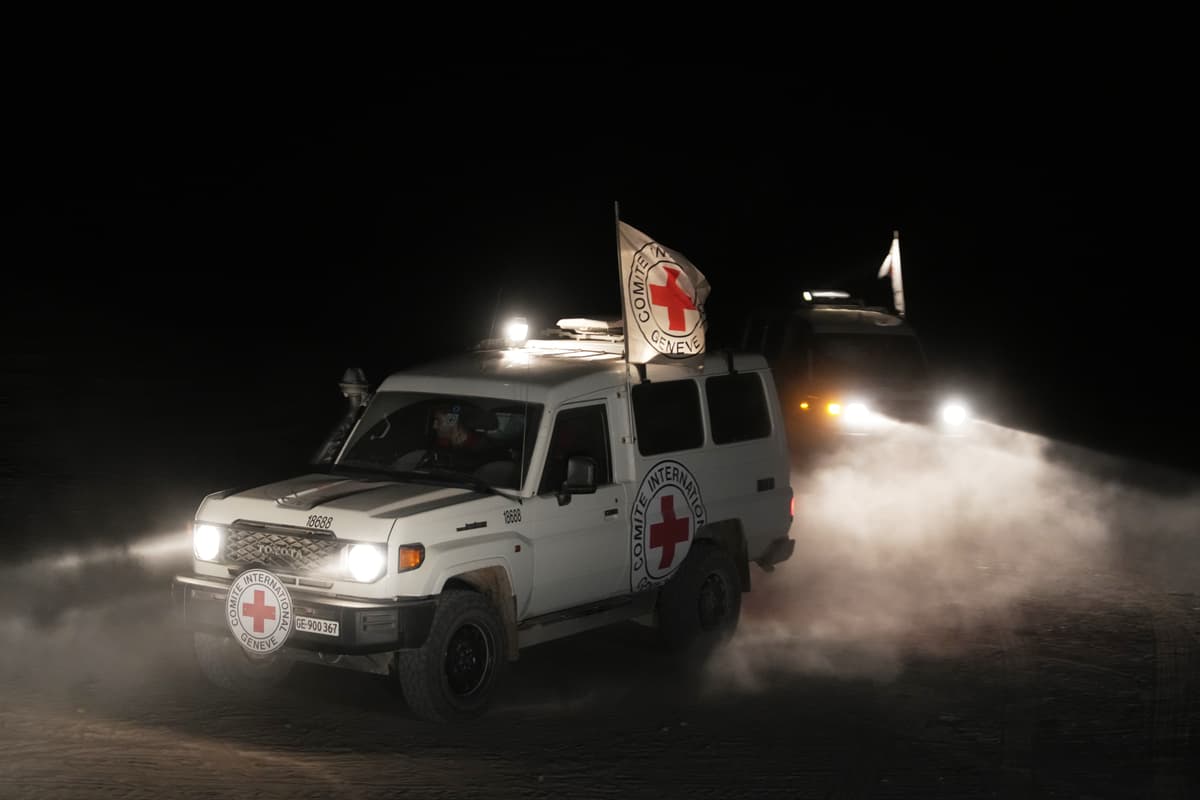Hamas Terrorists Trapped in a Tunnel Are Seen as Crucial to Gaza Ceasefire
‘Letting them go would be crazy, but if we don’t we risk a dispute with the Americans over nothing,’ an Israeli analyst tells the Sun.

Up to 200 Hamas terrorists have been trapped for days in a Gaza tunnel, with tensions over their fate growing among Israel, America, and Hamas’ benefactors in Qatar.
Between 100 and 200 armed men have been stuck for days inside a Gaza terror tunnel at Rafah, near the southern Strip’s border with Egypt. American officials are reportedly pressuring Israel to let the terrorists emerge from the tunnel, give up their arms, and leave unharmed to Hamas-controlled northern Gaza.
As a debate about what to do with the stranded terrorists in Israel grows, widely disseminated press reports emerged that the tunnel contains the remains of a soldier, Hadar Goldin, who was abducted to Gaza and killed 11 years ago. When Israeli hawks accused the government of leaking the report to excuse inaction against the terrorists, the army denied that Goldin’s remains are in the tunnel.
“The IDF has no information indicating that the body of Hadar Goldin is located in the tunnel where Hamas operatives are currently positioned in the Rafah area,” the army spokesman’s office said in a statement. “These claims are false and cause harm to the family.”
Americans overseeing the cease-fire implementation, meanwhile, are pressuring Prime Minister Benjamin Netanyahu to let the terrorists leave the tunnel without their weapons. Publicly at least, the premier is resisting the pressure.
“Either choice is bad,” the head of the Jerusalem Institute for Strategy and Security, Yossi Kuperwasser, tells the Sun. “Letting them go would be crazy. If we don’t, though, we risk a dispute with the Americans over nothing.”
According to President Trump’s 20-point Gaza plan, “all military, terror, and offensive infrastructure, including tunnels and weapon production facilities, will be destroyed and not rebuilt.” Some in the American-led facility near the Israeli city of Kiryat Gat, erected to supervise the plan’s implementation, are reportedly urging Israel to allow the terrorists to leave the tunnel unharmed without their weapons.
A photo opportunity featuring Hamas fighters laying down their arms could be presented as a success for a provision of Mr. Trump’s plan that says, “Hamas members who commit to peaceful co-existence and to decommission their weapons will be given amnesty.”
Either way, the process of disarmament is envisioned as a follow up to the yet-uncompleted release of all hostages, dead and alive. On Thursday, Hamas transferred to Israel the body of Joshua Loitu Mollel, a 21-year-old Tanzanian who was in Israel to study agriculture. He was murdered on October 7, 2023, while working at Kibbutz Nahal Oz, near the Gaza border, and his body was taken to Gaza.
Five deceased Israelis and the body of a Thai citizen remain in Hamas’s hands. Goldin was abducted in 2014 and was later killed at Gaza. His family has been lobbying for more than a decade to force Hamas to return his body. Israel believes that Hamas knows exactly where his remains are buried near Rafah.
The IDF Chief of Staff, Lieutenant General Eyal Zamir, said on Tuesday that the 200 trapped Hamas operatives would not be permitted to leave before Hagar Goldin’s body is returned. “No live terrorist will be released without the fallen soldier,” he said.
Some Israelis say the tunnel situation should be dealt with on a tactical level, rather than letting it devolve into a strategic crisis involving Washington, Jerusalem, and Doha, where the top Hamas negotiator, Khalil al Hayya, resides.
“We shouldn’t be talking with al Hayya and all these people,” a former senior official at Shabak, the internal security agency, Ilan Segev, told Channel 12 on Thursday. Local IDF commanders, instead, “should communicate with the terrorists inside the tunnel. They’d sooner or later run out of food and water, and would have no choice but to surrender. Some of them are likely already eager to give up.”
In such a case, Mr. Kuperwasser adds, Israel could take the men into custody for trials on terror-related crimes. Freeing them instead, even if they agreed to hand over their weapons, would be a bad choice, he says.
Apart from the terrorists in the tunnel, he says, Hamas officials vow to keep up the organization’s military abilities. “For Israel, disarming Hamas is the top goal. It’s the heart of the cease-fire agreement. Without it, no progress is possible. It’s also crucial to demonstrate to terrorists everywhere that October 7 was a Hamas blunder.”

